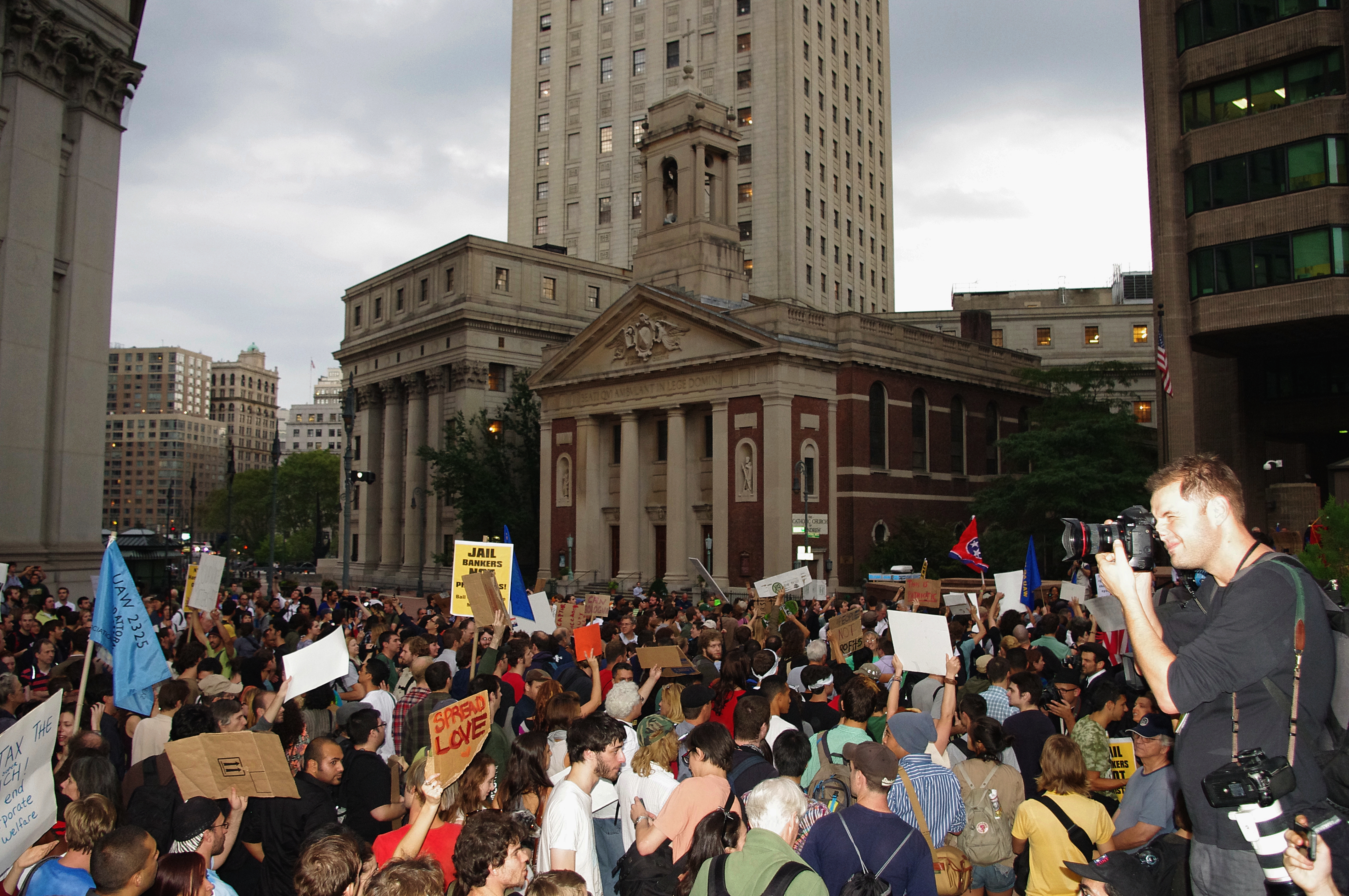I have never been one to argue about the power of grassroots movements. They tend to be unfocused, unorganized and without a meaningful set of goals. Occupy Wall Street and its affiliates, which are popping up in major cities all over the country, are no different. The lack of organization and cohesiveness to a set of goals within the movement has been a common criticism from both supporters and opponents of the movement.
In an editorial published October 8, the New York Times defined the ethos of the movement:
“Income inequality is grinding down that middle class, increasing the ranks of the poor, and threatening to create a permanent underclass of able, willing but jobless people.”
These are fair concerns. By all accounts, social mobility is not what it used to be. Education costs are rising, unemployment is stagnant and Washington seems too blinded by partisanship to take on these issues. In the context of the financial crisis, the middle class feels like they are the ones suffering because of risky investments made by Wall Street. This was the populist movement that I logically expected to see from the beginning of the financial crisis.
Despite this, deciphering the goals of the movement has not been easy. I realized this when a friend asked me what the point of the movement was, and I found myself, for once, lacking an opinion. I would have loved to write this article as an analysis of the policy goals of the movement. Unfortunately, that would be impossible–they do not exist. Without organization and a concrete set of policy goals, Occupy Wall Street and its brethren throughout American cities can expect to stay a fringe movement that dies quietly as soon as the weather turns cold.

So, what can the Occupy Movement do if it wants to make a difference? It can start by following the Tea Party’s lead. It would be an error to characterize the Tea Party movement as purely grassroots. While the Tea Party may have started as a bunch of angry old men and women in tri-corner hats, they were able to organize coherent ideas and a unified voice. This brought them financial backing from sympathizers such as the Koch Brothers, and despite lacking a unified leader, the ability of the movement to coalesce around a number of prominent figures including Sarah Palin and Glenn Beck.
The American political system is designed specifically to tap into such sentiments. With constant elections, officials tracking public opinion on a daily basis and a media industry that is quick to find the next big story, the American political system is hypersensitive to public opinion.
Tea partiers knew this. They went out and found candidates to represent their ideology of small government, low taxes and low government spending. These candidates unseated a significant number of Democrats and even challenged moderate Republicans for their Congressional seats. There are now 63 members of the Tea Party Caucus in the House of Representatives and 4 in the Senate.
Tea party representatives and sympathizers have been remarkable in bringing their policies to the forefront of American politics. Deficit reduction became a priority in Washington with the creation of the Supercommittee. Largely from Tea Party pressure, Republicans were able to take the debt ceiling, a historically meaningless issue, and turn it into a lever to instrument widespread budget cuts. Newly elected Governors reduced public sector employment and eliminated collective bargaining agreements. The Republican Presidential election has greatly discussed shrinking government and lowering taxes. The merits of their arguments can be debated, but the Tea Party’s influence is widely felt throughout political decision making.
Young people make up the majority of those protesting corporate greed and inequality all over the country. Yet, just 24% of 18 to 29 year-old voted in the 2010 midterm elections. Students should think about that the next time they complain that they’re not properly represented.
Finally, because of First Amendment protections, groups can raise virtually unlimited sums of money to communicate and organize on specific issues. The Tea Party did this, and the Occupy Movement should do the same. I’m guessing that a group protesting the concentration of wealth is ideologically cautious about entering the business of campaign donations. However, protesters must accept that in order to change the system, they must first utilize it. I am certain there are a number of wealthy people out there who are sympathetic to the overall sentiment of the protests. Labor unions and progressive groups might even be willing help with funding and organizing campaigns, but it will be difficult for them to make the investment if the Occupy Movement refuses to create some sort of organizational strategy and set of goals.
If Occupy protesters really want to change something, they will need to utilize all available tools. They need to organize and find an outlet for their voice. They need to find influential people who are sympathetic to their cause. They must orchestrate a campaign or put together a political action committee.
That’s how change gets made in this country. Just ask the Tea Party.

